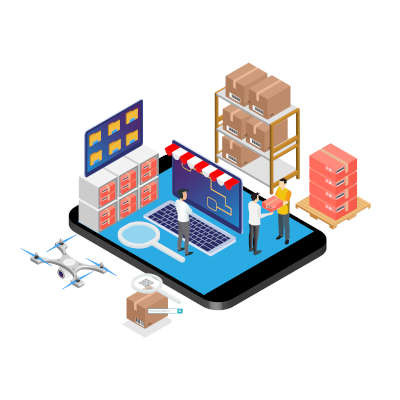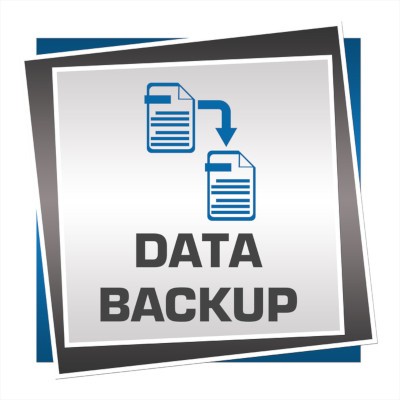The Connection, Inc Blog
You may have been in a position where you tried to implement a technology solution in the past only to find that your staff is simply not responsive to it in any capacity. Maybe they do not see the value in the solution, or they do not understand what issues the solution resolves for your organization. To help you instill the correct mindset in your employees regarding technology, here are some training tips!
When looking to present an idea, the first two options people think of are often to use a video, or to use a slideshow (typically, citing Microsoft PowerPoint). Our question is, why pick? Let’s go over how simple it is to embed a YouTube video right into your next PowerPoint presentation whether you’re using PowerPoint 365 or PowerPoint 2016.
Email—it’s a business tool that we all use and rely on, but (if we’re being honest) it can be a pain to manage properly. Unfortunately, this can also depreciate the value of the solution to its users. To help prevent these problems, we wanted to share a few tips to assist you with your email management.
If your business is like most, you and your team likely rely on a schedule to keep your processes moving along efficiently… while also ensuring that everyone has something to work on at any time. However, this is often easier said than done, which is why there are now cloud-based software options that make your scheduling efforts a little smarter.
Chances are your business has been affected by COVID-19. For those companies who had to shut down their operations, and are in the process of opening back up; or, the business that moved operations out of their location and had their employees work remotely and are recalling their employees, this situation is unprecedented. This month, we thought we would take a look at some of the factors surrounding this process, and how they will affect your staff.
For every business, it’s essential to be prepared for any unforeseen problems that can disrupt day-to-day operations. One easy way to do this is by keeping an extra workstation on hand.
Having a spare PC is actually a common recommendation for many business continuity plans. The purpose is to have a terminal ready to go that your employees can use for whenever their regular workstation must undergo repairs. Otherwise, they might just stand around with nothing to do, which adds up to a lot of lost productivity.
Considering how much money results from downtime, having an extra workstation on hand is well worth the expense. Also, it’s not like your spare PC has to be a state-of-the-art machine. In fact, a basic computer having just enough resources to run your mission-critical applications should do the trick.
Obtaining a spare PC doesn’t have to be difficult. If you’re a growing company that’s regularly refreshing your hardware, then it’s simply a matter of storing away an older PC that’s been replaced--assuming that it’s still in good working order and can perform the minimum job requirements.
If, on the other hand, you’re a newer company that hasn’t yet gone through a hardware refresh, then you’ll likely have to purchase a new computer in order to have an extra one on hand. Just keep in mind that you don’t have to buy anything fancy. After all, you just need a spare PC.
While we’re on the subject of swapping out workstations, let this scenario serve as a reminder of why it’s best to store all work-related files and applications over a company server or cloud storage solution. That way, all one would have to do in order to keep the project moving forward, is simply unplug one computer and swap it out for another. Plus, if your applications are running over the network, then the terminal needed to access the software would only have to be something basic and affordable, like a thin client.
Alternatively, going with BYOD (Bring Your Own Device) may suffice in your time of hardware repair. If an employee can use their own mobile device, like a laptop, to access the network and get work done, then pulling their workstation in order to fix it shouldn’t hinder operations. However, if you go this route, you’ll want to make sure that proper security measures have first been implemented before allowing a personal device to access company files. Also, even if you allow for BYOD in your office, it’s still a good idea to have a spare PC on hand.
At the end of the day, having an extra workstation comes with many benefits, and it’s just one of the many precautions you can take to ensure that operations will continue while downed technology is getting repaired or replaced. For more tips on how to protect your assets with a bulletproof business continuity plan, give The Connection, Inc a call at (732) 291-5938.
Let’s be honest; when was the last time you seriously went out of your way to take a day off from work? The corporate business environment often leads both business owners and normal office workers to overindulge themselves in their work. Plus, the mobile-first business model isn’t making it any easier to take time off, as you’re connected to the office no matter what. However, science is proving that it’s not just beneficial, but practically necessary, to take time off on occasion.
Owning any piece of technology in today’s day and age is like a playing with fire. While it’s a great tool that has allowed civilization to grow and make great strides toward a better future, there’s also significant risk involved with owning such an expensive piece of technology. If it breaks down on you, you’ll be left with both a dent in your pocket and possibly even a chunk of your data missing. Here are three ways that even the average PC user can improve the performance of their technology and extend its life cycle considerably.
Keep it Clean
Keeping your PC clean is important to prolong its life cycle, as dust can build up and prevent critical airflow. Furthermore, when airflow is limited, heat can build up within your machine, which could damage the components and lead to overheating. Just be sure to keep your workspace clean and to keep the fan vents clear of obstruction, and you should be fine.
Monitor RAM Usage
RAM is one of those things in your PC that you don’t know you need more of until it’s already an inconvenience. Basically, it’s the memory in your computer that allows you to perform multiple tasks at the same time. If your PC only has 2GB of RAM in it, good luck having multiple videos open or performing other resource-intensive tasks. If your computer is running slower than normal, you can use your Task Manager app to see where your PC’s resources are being eaten up. This might hint that your machine has a security problem, too, so address any issues by contacting your IT service provider.
Install Updates and Patches
It’s important that you implement the latest patches and security updates. As without them, you’re leaving your devices exposed to potential security threats. Hackers are always creating new ways to infiltrate networks and infect systems with their malware, and many of these problems can be resolved by simply keeping your devices as up-to-date as possible. It’s a simple way to ensure that your devices won’t be compromised by developing threats.
If you’re a business owner, you’ll notice that these are also three tips that we would suggest for you to keep your IT equipment in working in proper working order. After all, your organization depends on it to stay running efficiently, so you’re only helping yourself by taking good care of your technology. If you’d rather just not worry about your technology maintenance, The Connection, Inc can handle this responsibility for you. Our managed IT services are designed to provide New Jersey businesses the hands-off technology maintenance you need to ease your workday and concentrate on your business.
To learn more, reach out to us at (732) 291-5938.
One of the most effective methods to boost employee productivity is to encourage your workforce to work together in order to achieve their goals. Workplace collaboration allows multiple employees to combine their efforts and energies into a common project, adding value to the final product and often completing it more quickly. The benefits don’t end there, either. Here are some of the other advantages gained by encouraging collaboration among your workforce.
Increased Efficiency
As the old saying goes, two heads are better than one. With multiple people actively pursuing a common goal, progress toward that goal can move along much quicker than if a lone worker had to complete it independently.
Greater Engagement Between Employees
Workplace collaboration solutions tie the entire office closer together, even if some of your employees aren’t technically “in” the office. Connecting office employees with their remote-working teammates will help your remote workers feel like they are still involved and valued--and allow your in-house employees to benefit from their input as well.
Of course, your in-house team members can experience the positive effects of collaboration as well. Having employees share ideas also encourages them to build off of each other’s successes, and will often result in a sense of camaraderie among team members.
Initiating New Employees
One of the fastest methods for a new employee to learn what they are supposed to do is to learn it from an experienced coworker. The other method is to dive right into it. Collaboration solutions offer the opportunity for a new employee to do both as they and the more experienced team member work together to complete the task at hand.
These are just a few brief samplings of the many benefits a company can enjoy once collaboration has become a part of the office culture. The question now is, how does one go about encouraging collaboration in the first place?
Lead By Example...
First of all, if your employees see you extolling the benefits of collaborative work while never participating in it yourself, they are apt to disregard your recommendations and continue to go about their work on their terms. However, if you demonstrate the value of collaborative work by initiating it with your workers, you prove not only that it does present benefits to business operations, but also that you are serious about implementing it.
… but Know When to Step Aside
As a leader, you will need to be cognizant of when to back off and trust your employees to do what they have to do. Micromanaging a project and trying to force collaboration on your employees will result in the opposite effect that you were hoping for, wasting time and reducing their morale. Have faith that your employees are capable of doing the job you hired them to do with minimal direction.
Let Your Employees Speak Up
Make sure that your employees have a forum to voice their ideas and concerns. A big part of collaboration is the ability for each team member to contribute to solving problems that an organization encounters. Give them a way to share their ideas for improvement and acknowledge each idea as a viable option. This will bring the team closer and create a more cohesive workplace.
Demonstrate the Benefit to the Employee, Not Just the Company
Presumably, your workforce is made up of human beings, which means that at least some portion of them will, when presented with the idea of collaboration, think to themselves, “What’s in it for me?” This is not the time to focus exclusively on how internal collaboration will be of benefit to the company. You should also mention how much easier collaboration can make their jobs, making the benefits personal and professional, and in turn making them more likely to embrace collaborative work.
If you’ve found success in increasing collaboration in your workplace, let us know how in the comments below.
There’s nothing quite like signing off on your first business space. It’s like officially saying, “My business is up and running. Visit my office today!” What’s even more exciting, however, is when your organization is growing so quickly that your business space becomes cramped or too small to grow unhindered. Either way, the way you set up your office is going to be an important part of running your business.
Email is a particular favorite attack vector of many who would do wrong by your business, as it is easily one of the most used communications in most businesses today. Do your employees know how large of a responsibility they have to your business’ security just by using email? In order to prevent unfortunate security blunders, you need to make sure you and your employees know a few best practices when it comes to handling email securely.
Businesses are driven by processes. More often than not, these processes are fairly definitive - do this, then do that, then do the other thing - and require a set order of operations. There also happen to be a lot of these processes, which makes it important that they are well-documented so you and your employees can refer to this documentation later. Here, we’ll offer a few tips on how to best document a task.
A business’ IT solutions aren’t the kind of thing that you can worry about once and never touch again - this is why manufacturers and developers are always sending out upgrades. However, you also need to have a strategy ready before you go to implement these upgrades. For this week’s tip, we’ll review how to put this strategy together.
“By failing to prepare, you are preparing to fail.”
This quote is frequently attributed to Benjamin Franklin, and while it may not have actually been said by the Founding Father, it still teaches a valuable lesson - especially where disaster recovery is concerned. In other words, you need to make sure you have a working disaster recovery strategy - working being the key point.
To do that, you need to make sure that your backup and disaster recovery plans are effective, which in turn means you need to test them.
What Kind of Disasters Do You Need to Prepare For?
The first step to an effective disaster recovery strategy is to be prepared for as many scenarios as possible, as there are a wide variety of circumstances that could create a problem for your business.
- User Errors - While many user errors may be viewed as minor inconveniences, there are plenty of ways that a disaster can result from a simple mistake on the part of one of your users. Accidental deletions, shadow IT, and other common enough scenarios can all put your business in a bad place if you aren’t prepared.
- Key Staff Unavailability - What would happen if someone with exclusive access to key data was suddenly kept from the office, either due to some accident, a personal emergency, or some other situation? If they had exclusive access to critical business information or documents, you may find yourself stuck.
- Equipment Failures - Any business today relies on a lot of equipment, from the machines that power their processes to the infrastructure that supports them, the technologies they use to maintain communications to the basic functions of their location like lighting and HVAC. There are also a lot of ways that the equipment you rely upon could fall short, interrupting your processes.
- Malware - Malware has been a threat to businesses for a long time, evolving from the basic viruses that once plagued systems to the advanced threats that we see today. Adding to the threat is the fact that these attack vectors are constantly updated, meaning you have to stay vigilant against these threats.
- Natural Disasters - These are likely the first threats that pop into your mind when you think of a disaster that needs to be recovered from. Every place on the planet is susceptible to some kind of natural disaster, whether it's a hurricane, earthquake, flood, high winds… you just need to identify your biggest risk, based on your location, and prioritize your preparations accordingly.
- The Unexpected - There are plenty of potential situations that don’t really fit into any of the other types we went over but can still cause big problems for your business. While these scenarios are hard to predict by definition, you should do your best to be prepared for any situation.
How to Be Sure You’re Properly Prepared
In a word: testing.
There are a variety of preparations and evaluations you should routinely go through in order to be sure that your disaster recovery strategy is sufficient. Why routinely? Simple - while it may be the one that is updated the quickest, malware isn’t the only threat that develops over time. Take user errors, for example: new employees are likely going to be unaware of many threats at first, and the most accurate way to find out what they know is to evaluate them. There are even different means of evaluating your employees, which should be combined into a comprehensive test and delivered on a periodic basis.
These tests should be designed to evaluate both the technical side of your disaster recovery process and your team’s ability to carry it out. As you collect data from these tests, you should update the plan to resolve any issues that may have become apparent, as well as keep your test airtight and devoid of any weak points.
Tests that You Should Run
Like we said, there are assorted evaluation processes that your employees should all go through on a semi-regular basis. These include the following:
- Walkthrough Test: This is simply a basic review of the plan, reading it over to ensure that everyone involved remains updated to any possible changes that may have been made.
- Tabletop Test: Similar to a tabletop game, someone from each department comes in and is given a hypothetical disaster scenario. Each team member should explain what they would do in their given scenario. This is useful in revealing possible shortcomings in a business’ existing strategy.
- Parallel Test: These tests are meant to evaluate how well the restoration process works, using a virtual machine to “restore” your system, which continues to run in your usual infrastructure
- Full Interruption Testing: This test is one of the most in-depth, but also the most risk-laden, as it could lead to actual downtime. In fact, some industries have regulations barring this kind of test, so be sure to double-check with your IT resource that this option is available to you.
Disaster recovery is a critically important process for any business to see to. If you want help in ensuring yours is prepared properly, turn to the professionals at The Connection, Inc. Give us a call at (732) 291-5938 today.




















